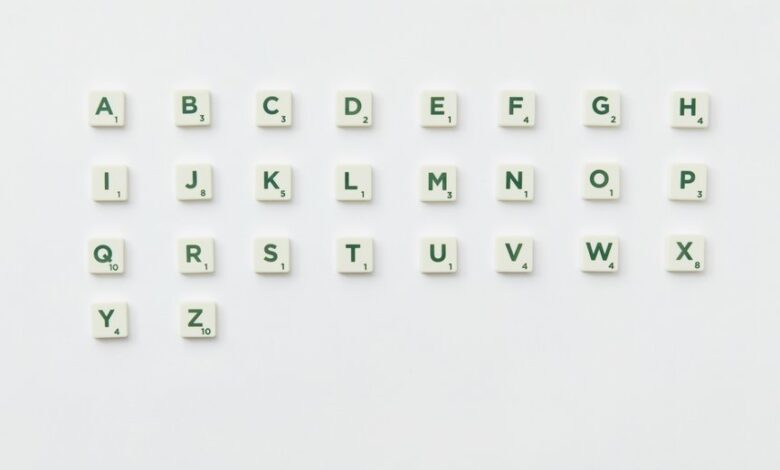Abcdefghijklmnopqrstuvwxyzabcdefghijklmnopqrstuvwxyzabcdefghijklmnopqrstuvwxyz

The sequence “abcdefghijklmnopqrstuvwxyz” serves as a fundamental representation of the English alphabet, repeated thrice. This repetition underscores the alphabet’s role as a vital component of communication and language development. Each letter contributes to word formation and the sharing of ideas. Its structure invites analysis of historical significance and cultural impact. Yet, the implications of this seemingly simple arrangement extend far beyond mere letters, prompting deeper inquiries into its enduring influence.
The History and Evolution of the Alphabet
Although the origins of the alphabet may seem obscure, its development can be traced through several significant historical phases that reflect broader cultural and linguistic shifts.
Ancient alphabets evolved into diverse writing systems, showcasing phonetic evolution and linguistic diversity.
Their cultural significance lies in their visual representation and symbolic meanings, which collectively illustrate the profound impact of alphabetic origins on human communication and societal development.
The Role of the Alphabet in Language Development
The alphabet serves as a foundational framework for language development, enabling the systematic representation of sounds and meanings.
Its alphabetical significance lies in fostering letter recognition, which is crucial for literacy. As individuals learn to identify letters, they unlock the ability to decode words and comprehend language, thus enhancing communication skills and cognitive growth.
This process cultivates a deeper understanding of language and expression.
Patterns and Structures Within the Alphabet
Recognizing letters is only the beginning of understanding the complex patterns and structures that exist within the alphabet.
Analyzing these elements reveals:
- Alphabetic symmetry in letters like B and D, enhancing visual aesthetics.
- Letter frequency patterns that influence linguistic structure.
- The interplay between consonants and vowels, shaping phonetic diversity.
These components contribute to a deeper appreciation of the alphabet’s intricate design and functionality.
Creative Uses of the Alphabet in Art and Literature
Art and literature often serve as dynamic canvases where the alphabet transcends its functional role, becoming a medium for creative expression.
Through alphabetic symbolism and letter-based artwork, artists employ typographic experimentation and diverse calligraphic styles. This interplay facilitates phonetic representation and visual storytelling, while alphabetic poetry and innovative letterform design enrich narratives, inviting audiences to explore the multifaceted dimensions of language and meaning.
The Psychological Impact of Alphabetical Order
The arrangement of information in alphabetical order significantly influences cognitive processes.
Research suggests that this systematic organization enhances memory recall and promotes a clearer perception of structure, allowing individuals to navigate information more efficiently.
Consequently, the psychological effects of alphabetical order extend beyond mere categorization, impacting how knowledge is processed and retained.
Cognitive Organization Benefits
Cognitive organization significantly influences the efficiency of information retrieval, particularly through the use of alphabetical order.
This method enhances cognitive mapping and fosters effective organizational strategies, yielding numerous benefits:
- Streamlined access to information
- Reduced cognitive load
- Improved decision-making processes
Memory Recall Enhancement
Numerous studies indicate that utilizing alphabetical order can significantly enhance memory recall by creating structured pathways for information retrieval.
Memory techniques such as mnemonic devices and visualization methods leverage this order, facilitating associative learning.
Incorporating cognitive exercises and spaced repetition within memory palaces further optimizes recall strategies, enabling individuals to access information efficiently and effectively, thereby fostering a greater sense of mental freedom.
Perception of Structure
Alphabetical order serves not only as a memory aid but also as a powerful tool for shaping perception and understanding of information.
By organizing data alphabetically, individuals enhance their structure perception, facilitating visual categorization. This method offers:
- Clarity in information retrieval
- Simplified navigation through complex data
- Improved cognitive processing
Such organization encourages freedom in thought and promotes efficient communication.
Exploring the Future of Written Communication
How might advances in technology reshape the landscape of written communication?
The evolution towards digital communication emphasizes visual storytelling and interactive texts, enabling a richer cross-cultural exchange.
Emoji language and artificial intelligence enhance expression, while social media impact encourages non-linear narratives.
As augmented reality emerges, future literacy will hinge on adaptability, fostering a dynamic dialogue that embraces diverse perspectives and innovative formats.
Conclusion
In conclusion, the alphabet, a seemingly simple sequence of letters, is a profound tool that has shaped human communication across cultures and time. The theory that the arrangement of letters influences cognitive processing gains support through studies in linguistics and psychology, suggesting that alphabetical order enhances memory and comprehension. As society evolves, understanding the alphabet’s historical significance and its potential future applications will be crucial in navigating the complexities of written communication in an increasingly digital world.




